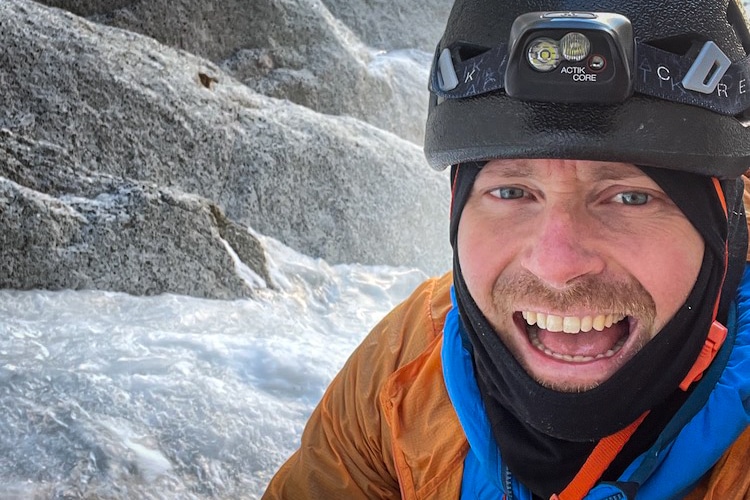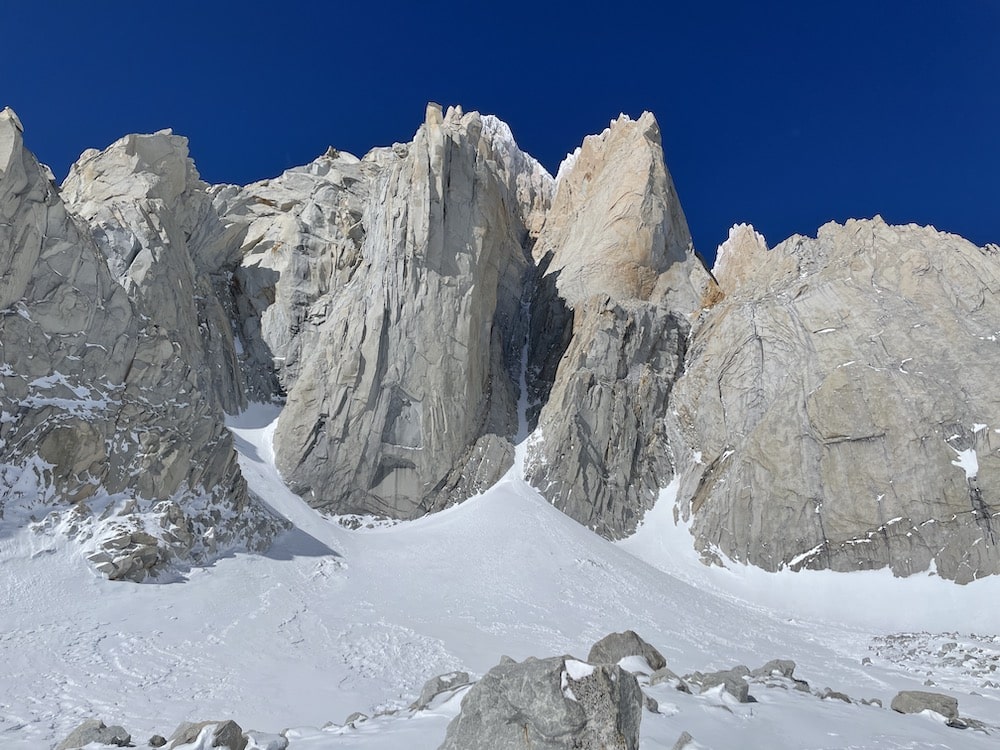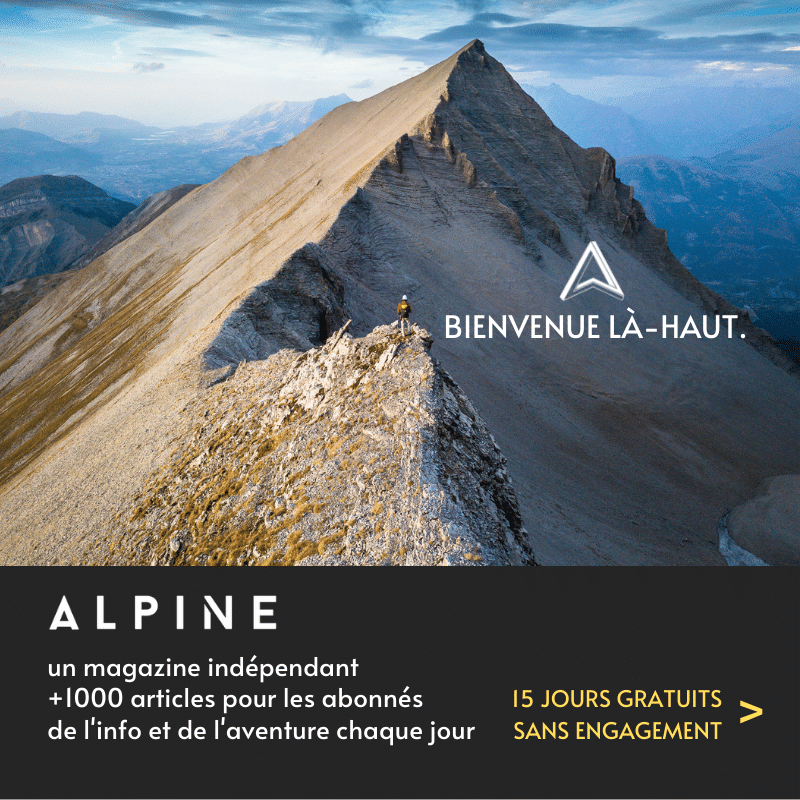Colin Haley is a seasoned climber of Patagonia. He climbed the Torre Egger solo in 2016, and already, in 2009, signed a solo ascent of the famous Fitz Roy Supercanaleta. But this time, in the middle of the austral winter, the Supercanaleta attracted him again. On September 19, Colin Haley made the first solo winter ascent of the Supercanaleta, although he had announced previously that he would stop making big solo ascents. A very intense experience, which he had been dreaming of for nine years, he explains.
Colin Haley has spent a great deal of time and energy making some of the most beautiful solo ascents of the last few years: Torre Egger and Punta Herron solo (January 2016) are a good example, as well as his express ascent of Infinite Spur in Sultana (Alaska) or the speed record on Cassin Spur in Denali (8:07, in 2018). Colin Haley divides his time between Chamonix where he spends part of the year, Seattle where he was born and Canada. In 2020, he confided that soloing was no longer his priority, citing the end of an “addiction,” a review drawn after a solo attempt on the same Fitz Roy Supercanaleta or Supercouloir in August 2019. Colin Haley has a long history with this very famous route, and no doubt he could not imagine a better conclusion to his close relationship with Fitz Roy.
It seems that the lure of the Fitz Roy in the cold season (the southern hemisphere is in winter) was stronger than ever. Colin Haley let himself be attracted by solo mountaineering again, this “outlet for perfectionists”. At the end of August he arrived in El Chalten and carried equipment to the foot of the Supercouloir. This is a route he knows well: he climbed it in 2007 with Maxime Turgeon, then made the second solo ascent in 2009, seven years after the first solo ascent by Dean Potter.
As he writes on his blog, “One of the biggest difficulties of solo climbing is that you don’t have anyone to help you carry the weight that is normally shared between two people, so you usually end up with very heavy backpacks. This difficulty was exacerbated in the winter, as I had to carry the clothing and bivouac gear necessary to survive comfortably in a winter environment with nighttime temperatures of -20C.” In early September he left for his first attempt, but the weather was not good. September 12 seems to be the right day: Colin Haley climbs the thousand meters of snow and hard ice of the Supercouloir section to the stuck boulder: above it, the climbing is technical, difficult, exposed.
A tough first attempt
At 2:30, Colin Haley stops. He finds his pace not fast enough. The doubt is there. “I spent 30 minutes thinking about life, climbing, the people I love, soloing, ambition, risk and the desire to stay alive. I felt, as I often have before, that what I was doing was ridiculous, and too stressful and scary to be enjoyable. Even before I prepared for the first encore, I thought it was highly unlikely that I would make another attempt.” He made dozens of rappels, ending up in his tent at the foot of the face just before the storm raged. The next day he came back down with his huge bag. “It was particularly obnoxious because I left with all my gear and therefore a very heavy pack, confident not only that I wouldn’t make another attempt on the Supercanaleta, but that I wouldn’t climb solo at all during the trip.”
Colin thought he’d give up trying again, but the Supercanaleta is a magnet
The Supercouloir draws him like a magnet. Two days after returning home, Colin Haley imagines a new attempt, and new strategies. It’s always amazing to see that solutions appear after a few nights in the warmth, where one imagines overcoming difficulties that seemed insurmountable before. On September 17, Colin Haley set off again, using snowshoes because it had snowed a lot. With the rage of having to go back up with a very heavy bag, his tent and his bivouac equipment that he had brought down a few days before. On the 18th, tired legs, he wants to take a day off but his friend Rolo Garibotti warns him by text on his InReach: the weather window is tomorrow, the 19th. Not the 20th. The next day Colin crossed the rimaye at 7am. He will reach the summit in the dark night.
Selfie at the top of the couloir itself, before the mixed and difficult rock. The summit is still very far. ©Colin Haley

“this is the most spectacular photo I’ve ever taken while solo climbing, minutes before the sun set on the Ice Cap” ©Colin Haley
The solo ascent
The Supercouloir is not a 100% direct route. Once the first thousand meters of gully are climbed, which hit a stuck boulder, the line escapes to the right, crosses in a zig-zag and finally reaches the southwest ridge, which must be climbed to reach the summit. By the time Colin reaches the ridge, he knows there’s little elevation change left, less than 200 meters, but a lot of unknowns. “There are several tricky sections on the upper southwest ridge, and they all require great care. I was in a sort of concentrated frenzy for this entire section of the climb, moving as fast as I felt I could (…). On some sections there was a pile of frost plastered to the rock, which slowed progress, but in other places the rock was almost bare, which was very advantageous. As the sun descended to the west, it was filtered by the low clouds over the Southern Patagonian ice cap, which made the scenery absolutely beautiful. I finished the last difficult pitch at 8:05 p.m., just as it was getting dark.” Isolation was at a maximum, and Colin Haley said he was, at that point, “very stressed and anxious.”
It was a very intense experience that leveraged the total skillset I have built up over the past 22 years of climbing and alpinism. Colin Haley.
” Being all alone on the summit slopes of Fitz Roy, in winter, in the dark, felt pretty absurd. From the top of the Supercanaleta, the upper slopes are largely south-facing (so they get no sun in winter time), and some bits were quite wind-sheltered, so there sections of thigh-deep powder snow. This felt bizarre, because it is so atypical for the summit slopes of Fitz Roy, and I was also genuinely concerned about the potential for slab avalanches in a couple of spots. Aside from the sections of deep snow, there were several sections of hard, grey ice, with a thin layer of powder snow on top of it. This was easy enough to climb up, but it added stress knowing that I would need to downclimb hard ice on the descent. I reached the summit of Fitz Roy at 21:23, and could see the lights of El Chaltén 3000 meters below. I wondered if anyone down in town was outside taking in some fresh air, and might see my headlamp 3000 meters above. I had been extremely lucky all day to have nearly zero wind, but finally on the summit it was fairly breezy from the north. I felt extremely anxious about the descent, and started down just a couple minutes after arriving on the summit.”
Against all odds, the descent went smoothly: Haley de-escalated and rappelled with his 60-meter single rope, until he found his second strand of 60 to descend the thousand meters of the couloir proper. At five in the morning on September 20, “I finally returned to my tent, extremely exhausted physically, mentally and psychologically.” He sums up his exceptional adventure this way: “It was a very intense experience that leveraged the total skillset I have built up over the past 22 years of climbing and alpinism.”
With this winter solo ascent, Colin Haley undoubtedly signs the end of his long history with the Supercanaleta, while adding a major chapter to the history of the Fitz Roy, climbed for the first time by Lionel Terray and Guido Magnone in 1952.






